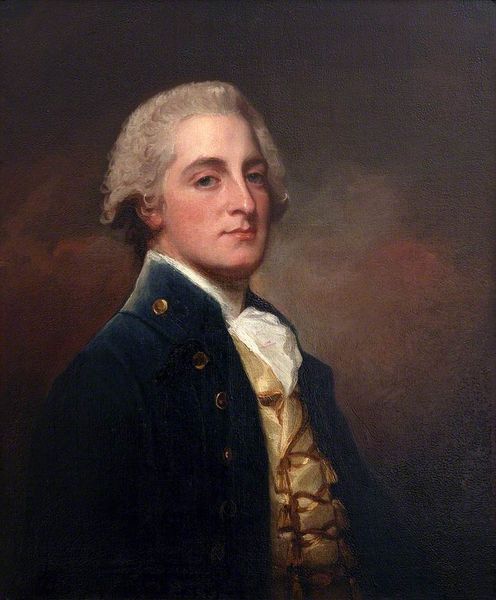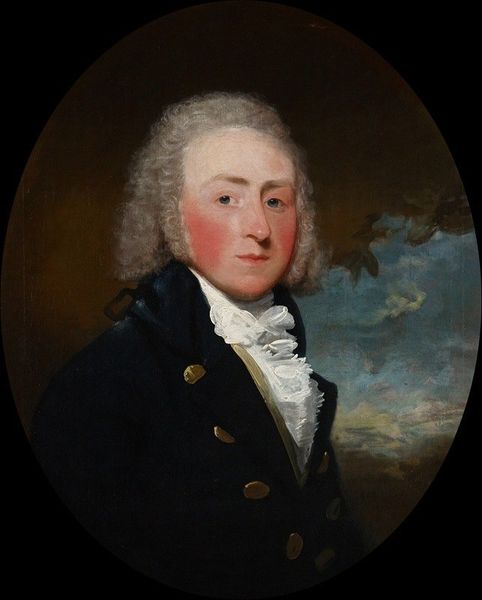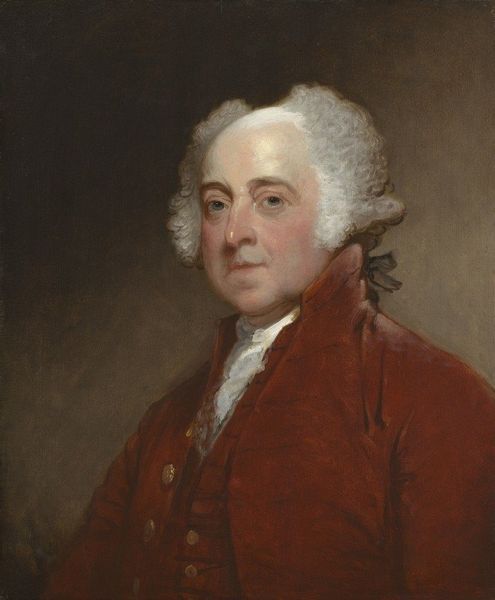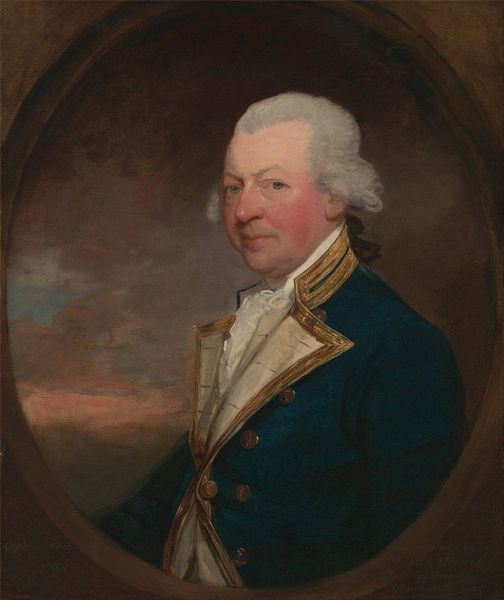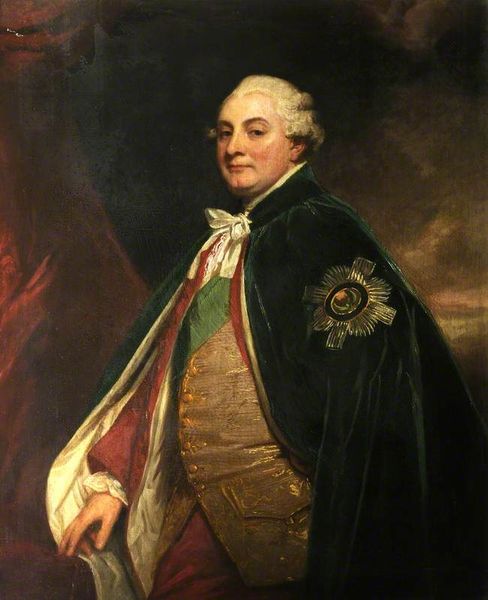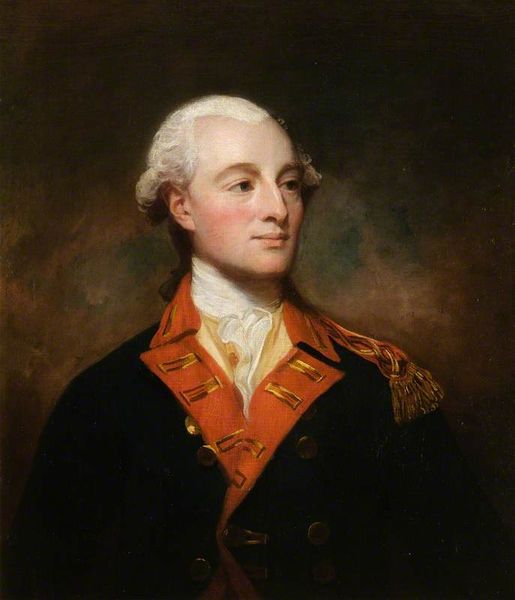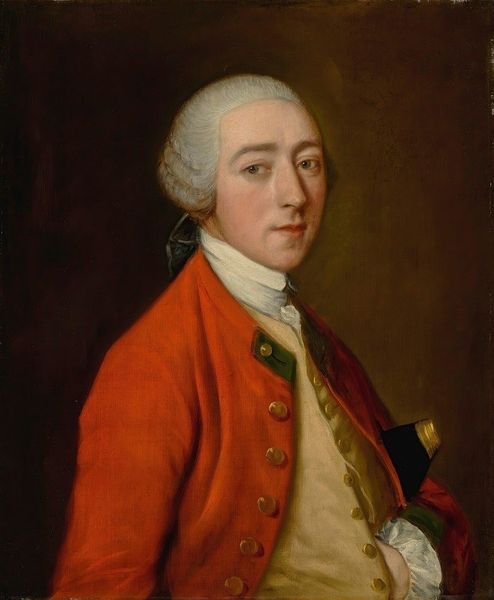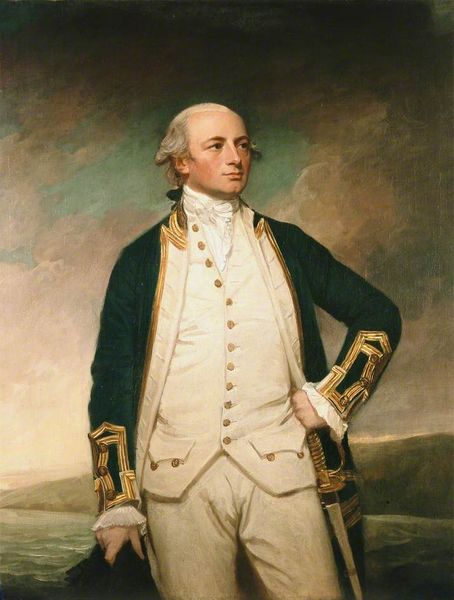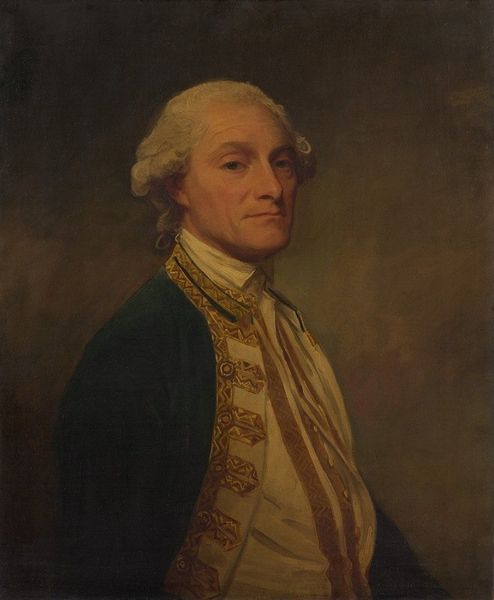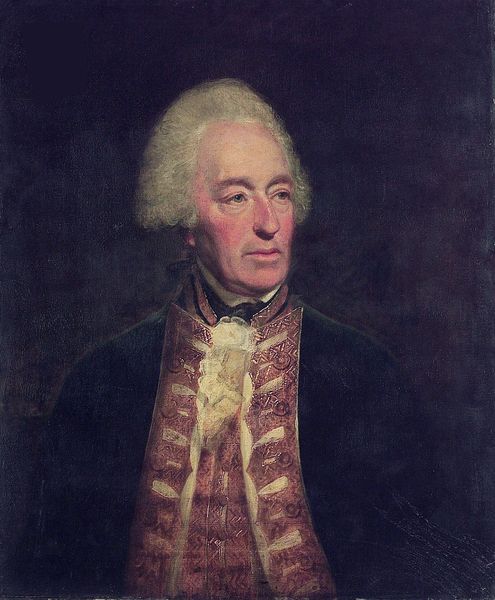
painting, oil-paint
#
portrait
#
narrative-art
#
baroque
#
portrait
#
painting
#
oil-paint
#
academic-art
Copyright: Public domain
Curator: Look at this painting! It’s a portrait of Philip Affleck rendered in oil on canvas by Lemuel Francis Abbott. I believe the date of execution for this piece to be some time in the 18th century. Editor: The immediate impression is one of calm authority. The sitter’s expression is so measured, and the colors are fairly muted save for that glorious, gold-trimmed navy coat. A uniform signifies status, and it evokes so much of the political structure of the era. Curator: Exactly! Let’s consider how such images reinforced power structures. Think about the historical context: naval power, colonialism, and this portrait acts as a signifier of British influence. Affleck’s confident pose and dignified bearing transmit that air of command. Who benefits from this portrayal and its message? Editor: Indeed. Beyond its surface presentation, I’m curious how identity operates here. His pale face and elaborate wig mark him as part of a particular social class with its distinct, racially-linked aesthetic. The image says, "This is what power looks like" in 18th century England. The class implications of who gets their portrait painted—and how—can't be ignored. Curator: Good point. The social function of art such as this portrait should not be glossed over, since such paintings displayed at social events cemented connections among the aristocratic families who owned them and affirmed a hierarchy based on gender, race, and social class. We can consider the institutional power of the portrait itself as a genre that favored wealthy men as subjects to represent historical power. Editor: It speaks to a constructed narrative of power where images are key sites for shaping social memory, especially when we consider the political message that it carried at the time, where it reinforced prevailing ideas about nation, leadership, and the value of social status, Curator: These portraits help us understand both what they chose to represent, but what has also been historically excluded in social representations of success. Considering that historical perspective gives us ways of seeing today. Editor: Ultimately, analyzing such works allows for a broader understanding of how political figures use artworks and art institutions to influence beliefs and ideals. I find it helpful to study these visual systems of historical symbolism to better address representation today.
Comments
No comments
Be the first to comment and join the conversation on the ultimate creative platform.
